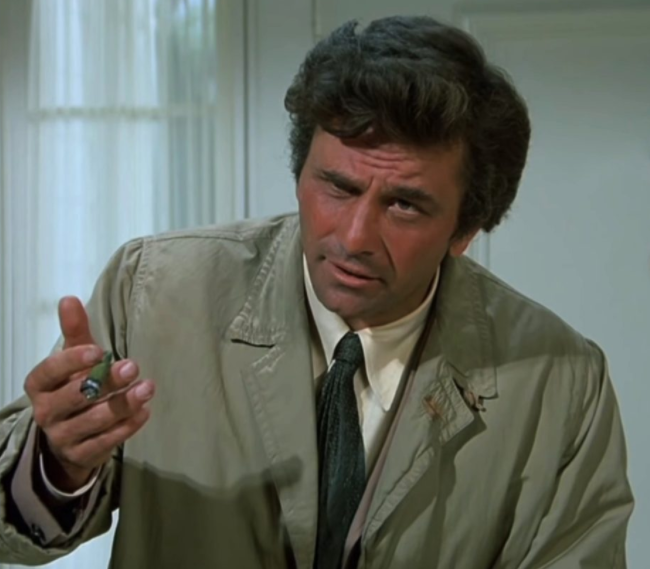“IDA LUPINO 100” at Film Forum
 (Film Forum’s retrospective Ida Lupino 100 runs through November 22. Go here for details.)
(Film Forum’s retrospective Ida Lupino 100 runs through November 22. Go here for details.)
Maybe it’s the movie stars whose names go above the title, but any student of the film industry quickly learns that the real power and the glory reside with the producers and directors — those who make the movies happen, and those who control what ends up on screen. Actors, even or perhaps especially the most successful ones, have always been drawn to those jobs, and have often excelled at them. Ida Lupino, a major actress of the 1940s who began directing and producing at the end of that decade, did more than excel. The movies she made between 1949 and 1953 are as good as anything that came out of Hollywood during those years. As an actress, she worked with some of the giants, including Robert Aldrich, Nicholas Ray, Don Siegel, Raoul Walsh, and William Wellman; as a director, she was their peer. If her reputation hasn’t yet caught up to theirs, it’s only because her movies haven’t been as widely seen. Happily, this is slowly changing. The last few years have brought restorations and high-quality home-video releases of some of her best films, and lucky New Yorkers can head over to Film Forum between now and November 22 for a retrospective celebrating the centenary of her birth: twenty-five features, including all seven that she directed.
Born in London to a family of stage actors, writers, dancers, and musicians, Lupino trained at RADA and then honed her craft in several now-forgotten British films before moving to Hollywood while still in her teens. The studios seemed unsure of what to do with her at first, but she soon hit her stride: throughout the 1940s and into the ‘50s, she turned in brilliant performances for Walsh (They Drive by Night, High Sierra, The Man I Love), Michael Curtiz (The Sea Wolf), Jean Negulesco (Road House), Fritz Lang (Moontide, While the City Sleeps), Ray (On Dangerous Ground), and Aldrich (The Big Knife). These are the films that make up her enduring legacy as an actress, and all of them are screening in the Film Forum series.
Tellingly, they’re all in traditionally “masculine” genres: crime thrillers, rugged adventure tales, gritty urban dramas. A woman carving out a place for herself in what was very much a man’s world: this was the situation many of Lupino’s most memorable characters found themselves in, and it was also her story as both actress and director. In fact, Lupino was the only female director working in Hollywood when she began. The film scholar Wheeler Winston Dixon notes:
Although there had been numerous women directors working in Los Angeles in the 1920s and ‘30s, including Lois Weber, Ida May Park, Ruth Stonehouse, Cleo Madison and Dorothy Arzner, by 1943 women had effectively been dismissed from the director’s chair…. [After] Columbia terminated Arzner’s contract… from 1943 to 1949 [when Lupino made her first feature] there was not a single film directed by a woman made in Hollywood.
Her career as a director followed from her decision to set up her own production company, as many stars did in the wake of the 1948 Paramount consent decree, the Supreme Court decision that ended the major studios’ monopoly on production and created an opening for smaller movies to be made and released. Lupino formed The Filmakers (sic) with her then-husband, the producer Collier Young, and the screenwriter Malvin Wald, and set out to make low-budget films that addressed pressing social issues, with greater creative autonomy than she could achieve within the studio system.
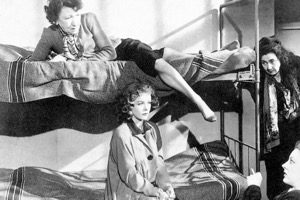 Not Wanted (1949), The Filmakers’ first production, was co-written by Lupino and Paul Jarrico, and was to be directed by Hollywood veteran Elmer Clifton. But when Clifton suffered a heart attack three days into shooting, Lupino took over directing duties, although she allowed him to retain sole credit. The film stars Sally Forrest as Sally, a young waitress who falls for Steve (Leo Penn, father of Sean and Chris), a piano player passing through her small town. They spend one night together, and then he leaves for the next town and the next gig. She follows him there, only to be rejected. Soon after, she discovers she’s pregnant, and is forced to reckon with the terribly limited choices facing an unmarried mother-to-be in the late 1940s.
Not Wanted (1949), The Filmakers’ first production, was co-written by Lupino and Paul Jarrico, and was to be directed by Hollywood veteran Elmer Clifton. But when Clifton suffered a heart attack three days into shooting, Lupino took over directing duties, although she allowed him to retain sole credit. The film stars Sally Forrest as Sally, a young waitress who falls for Steve (Leo Penn, father of Sean and Chris), a piano player passing through her small town. They spend one night together, and then he leaves for the next town and the next gig. She follows him there, only to be rejected. Soon after, she discovers she’s pregnant, and is forced to reckon with the terribly limited choices facing an unmarried mother-to-be in the late 1940s.
While it’s the least distinctive of the four Lupino films I’ve seen, Not Wanted is still an outstanding debut. Her strengths as a director are already evident: lean and briskly paced storytelling, sensitive direction of actors (Forrest is excellent in her first substantial film role), a rare gift for vividly stylized set pieces such as Sally’s anxiety-ridden walk down a hospital corridor, and an even rarer gift for crafting big-hearted, full-blooded melodrama that’s also resolutely unsentimental: see, as one example of many, the scene in which Steve disabuses Sally of any notion that they might have a future together. Lupino’s sense of character, and how character is shaped by social forces, is both wised up and genuinely wise.
Outrage (1950) takes on another difficult subject, rape. A young woman named Ann (Mala Powers) is harassed by a stranger while walking home from work one night. In a long, excruciating, and expertly rendered sequence, the stranger pursues Ann through darkened streets and desolate lots; eventually she collapses, exhausted. As the man approaches her helpless body, the prowling camera pulls away as if to spare us from what’s about to happen, but the next thing we see is devastating: the image dissolves to show us Ann staggering through the front gate of her parents’ house, limping horribly.
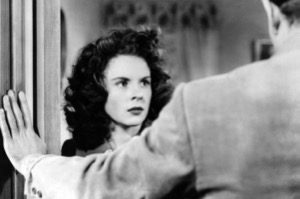 The assault happens only 15 minutes into a 75-minute movie; most of Outrage deals with its aftermath. Ann’s psychological trauma transforms her everyday life into a waking nightmare: the efforts of doctors and police officers bring her no comfort, and the halting, well-intentioned ministrations of her fiancé, parents, and co-workers only make things worse. At the breaking point, she ends her engagement and, like Sally in Not Wanted, runs away from home, seeking refuge in anonymity. The movie’s second half shifts to a different register, as Ann settles into life in a rural town and begins her journey toward health and wholeness, helped along by a kindly priest who’s both a father figure and a platonic lover-substitute. But the journey is interrupted by a second traumatic event, plunging Ann back into the depths of her terror.
The assault happens only 15 minutes into a 75-minute movie; most of Outrage deals with its aftermath. Ann’s psychological trauma transforms her everyday life into a waking nightmare: the efforts of doctors and police officers bring her no comfort, and the halting, well-intentioned ministrations of her fiancé, parents, and co-workers only make things worse. At the breaking point, she ends her engagement and, like Sally in Not Wanted, runs away from home, seeking refuge in anonymity. The movie’s second half shifts to a different register, as Ann settles into life in a rural town and begins her journey toward health and wholeness, helped along by a kindly priest who’s both a father figure and a platonic lover-substitute. But the journey is interrupted by a second traumatic event, plunging Ann back into the depths of her terror.
Lupino handles the story’s transitions from high-wire suspense to subtle character-driven moments with masterly skill. In one deeply affecting scene, Ann attends a country fair where beaming young couples take to the dance floor. The camera tracks with her as she walks around the dancers, their joy in each other’s company set against her solitude. Almost unconsciously, she bobs to the rhythm of the music and her feet take little half-steps, as if her body yearns to embrace life again but her mind won’t allow it. Some viewers have criticized the movie’s ending for being too conventionally upbeat, but to me it feels like Lupino is playing against the beat, as she often does — the story events indicate that Ann is on the road to recovery and ready to rejoin the social order, but there are unmistakable undertones of uncertainty, fragility, and the fear that the future will prove no better than the intolerable present. Outrage is a great film about living with wounds that might never heal.
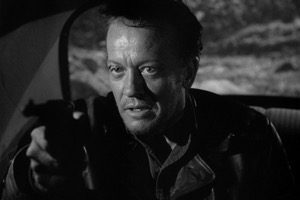 Not Wanted and Outrage are what used to be called “women’s pictures”: female-centered stories made for a presumably female audience. So are two other films Lupino directed for The Filmmakers, neither of which I’ve seen: Never Fear (1950), about a young dancer stricken by polio, and Hard, Fast and Beautiful (1951), about a mother who obsessively pushes her daughter toward tennis stardom. The Hitch-Hiker (1953) is an abrupt departure, a movie from which women are almost entirely absent. It has the simplest of setups: two friends (Edmond O’Brien and Frank Lovejoy) going away on a fishing trip are taken prisoner by a serial killer on the run (William Talman, unforgettable), who demands that they drive him to safety in Mexico. Most of the movie is set inside the car, or just outside of it, as they make their way south. The Hitch-Hiker is the only film noir of the classic period directed by a woman. It’s also a classic film noir, period: as spare, pitiless, and compulsively watchable as any movie the movement produced. Lupino’s direction is beyond inspired — it’s close to elemental in its purity and power. Between the claustrophobic confines of the car and the broiling, bone-dry desert landscape, the film takes on the feeling of an unending ordeal.
Not Wanted and Outrage are what used to be called “women’s pictures”: female-centered stories made for a presumably female audience. So are two other films Lupino directed for The Filmmakers, neither of which I’ve seen: Never Fear (1950), about a young dancer stricken by polio, and Hard, Fast and Beautiful (1951), about a mother who obsessively pushes her daughter toward tennis stardom. The Hitch-Hiker (1953) is an abrupt departure, a movie from which women are almost entirely absent. It has the simplest of setups: two friends (Edmond O’Brien and Frank Lovejoy) going away on a fishing trip are taken prisoner by a serial killer on the run (William Talman, unforgettable), who demands that they drive him to safety in Mexico. Most of the movie is set inside the car, or just outside of it, as they make their way south. The Hitch-Hiker is the only film noir of the classic period directed by a woman. It’s also a classic film noir, period: as spare, pitiless, and compulsively watchable as any movie the movement produced. Lupino’s direction is beyond inspired — it’s close to elemental in its purity and power. Between the claustrophobic confines of the car and the broiling, bone-dry desert landscape, the film takes on the feeling of an unending ordeal.
Edmond O’Brien also stars in The Bigamist (1953), a three-hander of a very different kind. He plays Harry Graham, a moderately prosperous San Francisco salesman married to Eve (Joan Fontaine). Eve can’t bear children, but she’s an able partner in business, and their union seems largely a happy one. But on one of his frequent sales trips to Los Angeles, Harry falls for Phyllis (Lupino, directing herself for the first time), a waitress in a Chinese restaurant. In love with Phyllis but unable to bring himself to divorce Eve, Harry marries Phyllis and has a son with her.
The Bigamist is a nuanced character study that unfolds like a thriller, a Lupino specialty. Therese Grisham, co-author of the book Ida Lupino: Director, has coined the useful term “home noir” to describe how some filmmakers of the postwar period invested the domestic interiors of melodrama with the psychic dislocations and sociocultural angst of film noir, which helps illuminate Lupino’s ability to wed these two seemingly far-apart modes of moviemaking, one stereotypically female and the other stereotypically male. The plot of the film is constructed in a way that makes Harry’s exposure inevitable, but even if that weren’t the case, O’Brien’s air of fatalistic melancholy would tip us off that happily-ever-after isn’t in the cards for Harry.
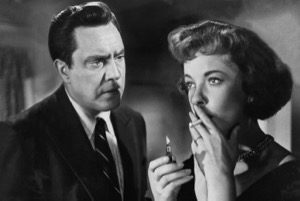 The critic Ronnie Scheib shrewdly locates the essence of Lupino’s characters in their passivity. Unusually for American movies, her protagonists are often less active than they are acted upon: by social circumstance and class, by family, by fate. This is true of Not Wanted and Outrage, and even The Hitch-Hiker (two men in helpless thrall to a third). Of The Bigamist, Scheib observes:
The critic Ronnie Scheib shrewdly locates the essence of Lupino’s characters in their passivity. Unusually for American movies, her protagonists are often less active than they are acted upon: by social circumstance and class, by family, by fate. This is true of Not Wanted and Outrage, and even The Hitch-Hiker (two men in helpless thrall to a third). Of The Bigamist, Scheib observes:
What is extraordinary in The Bigamist, as in all Lupino’s films, is the depiction of passivity not as a state but as a process of consciousness. O’Brien’s position is one of total clarity in terms of his feelings for and understanding of the two women, but of utter befuddlement at how to reconcile the largely incompatible actions requisite in each case, except by a complicated and disaster-threatening juggling act.
Harry Graham is no great American antihero, exploding with libido and life-force. He’s an ordinary man who happens to fall in love with two women, and finds it easier to live two lives than to choose one over the other. Lupino once again takes a sensationalistic premise and scales it down to the level of recognizable, relatable behavior. Eve and Phyllis are designed as opposites who appeal to different sides of Harry’s personality, but the movie doesn’t reduce them to types; they remain fully rounded characters. Lupino famously said, “I like to do films [about] poor, bewildered people, because that’s what we are,” and The Bigamist might be the finest expression of her tough-but-compassionate humanist vision.
After a couple of disastrous attempts at self-distribution, The Filmakers went out of business. Lupino moved into television, directing dozens of episodes of various shows through the 1950s and ‘60s. (She also continued to act well into the ‘70s.) Barbara Scharres, Wheeler Winston Dixon, and others have argued that her direction of shows such as Thriller, The Untouchables, and The Virginian displays some of the stylistic verve of her theatrical films, raising them above the level of hired-hand hackwork. Her final feature was The Trouble with Angels (1966), a light comedy set in a Catholic boarding school for girls, starring Rosalind Russell and Hayley Mills. It was slighted by many reviewers at the time, but Dixon asserts that Lupino “created a work of considerable depth and feeling within the confines of a rather blandly modern Columbia program picture.” If her movies were dismissed or ignored by the early auteurists and the first generation of feminist critics, opinion had shifted by the time she died in 1995, as the significance of her achievement became impossible to deny. No doubt her reputation will continue to rise in an era eager to celebrate pioneering female filmmakers, but her best work will long outlast the current cultural moment — she seems ever more clearly an essential American artist.
— Nelson Kim








